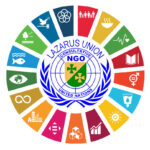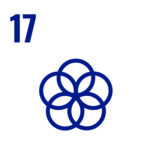HISTORY OF THE SUSTAINABLE DEVELOPMENT GOALS
1992 The Rio Conference
The history of the Sustainable Development Goals (SDGs) originally began in 1992, the year the United Nations convened a conference on environment and development in Rio de Janeiro to discuss environment and development issues for the coming century.
During this conference, the concept of sustainable development was established as an international guiding principle to create important conditions for a good life for all through economic efficiency, social justice, and the preservation of natural resources.

2000 The Millennium Development Goals (MDGs)
In 2000, the UN Millennium Summit adopted eight Millennium Development Goals (MDGs) by 2015. Seven of these goals related to
- the fight against extreme poverty and hunger
- primary education for all,
- gender equality and women’s empowerment,
- the reduction of child mortality,
- improving maternal health care,
- combating HIV/AIDS, malaria, and other major diseases
- ensuring environmental sustainability
primarily took the developing countries to task. The eighth goal concerns all member countries, but especially the developed countries, to use their global power to build a global partnership for development. to build a global partnership for development.
To make the goals measurable, the UN also defined sub-goals and indicators as well as reference data for evaluating the goals. The goals have been criticised for many reasons, including their one-sided perspective on development from the perspective of developed countries and the far too little consideration of ecological and environmental goals.
According to the corresponding UN report from 2015, the goals were almost met in the end, but unevenly. For example, there is still a need for action regarding gender inequality, climate change and environmental degradation, and peace and conflict prevention. Progress has been made above all in the eradication of poverty and hunger and in health.
2015 Sustainable Development Goals
Since the MDGs expired in 2015, the need for a new agenda (Agenda 2030 for Sustainable Development) was formulated at the MDG Summit in 2010. An important aspect in the formulation of this agenda is the integration of the Sustainable Development Goals (SDGs), which unite and link goals in the economic, ecological, and social fields.
The course for this was set in 2012 at the Rio+20 Conference, at which an Open Working Group (OWG) was tasked with developing the goals. Following consultation processes at national, regional, and global level, the working group finally proposed 17 Sustainable Development Goals in July 2014.
Unlike the MDGs, the new system of goals applies equally to developing, emerging and industrialised countries and thus places a greater obligation on developed countries to reduce their predominance.
In addition, the new development goals encompass all aspects of sustainable development and thus place greater emphasis on the ecological component of sustainable development. In addition to 17 Sustainable Development Goals, the Agenda adopted in 2015 contains 169 sub-goals as well as indicators and reference data.



